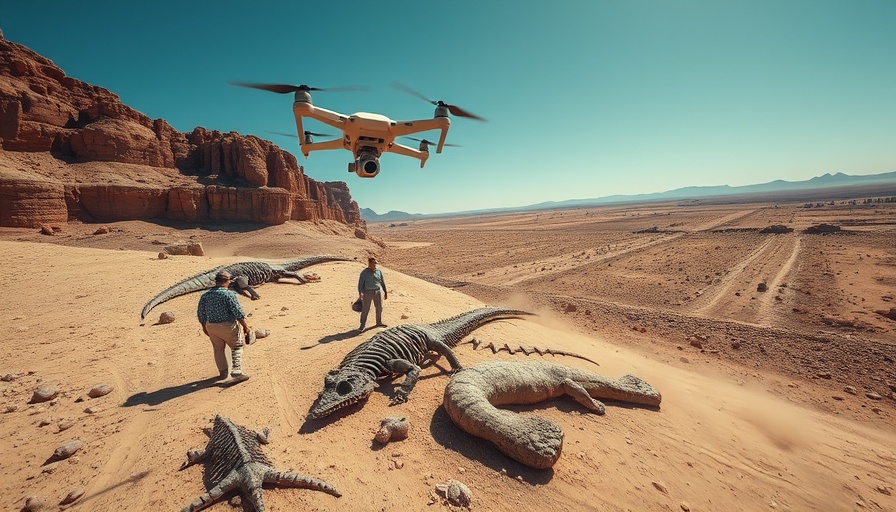
Drone Technology Reshapes Fossil Dating
In an exciting leap forward for paleontology, researchers from McGill University have utilized advanced drone technology to reshape our understanding of dinosaur fossil dating at Alberta's Dinosaur Provincial Park (DPP). This breakthrough not only challenges long-held assumptions about the geological markers used to date fossils but also opens the door to more precise methods for reconstructing ancient ecosystems. The study, which appeared in Palaeontologia Electronica, illustrates how innovations in technology can significantly impact the field of historical science.
The Problem with Traditional Dating Methods
For decades, paleontologists in DPP relied on the contact between the Oldman and Dinosaur Park Formations as a standard reference point for dating dinosaur fossils. However, this method posed inherent limitations. By measuring the elevation of a site in relation to this geological boundary, scientists were often left with rough age estimates rather than concrete dates. According to study lead Alexandre Demers-Potvin, this practice only scratched the surface, producing a timeline riddled with uncertainties.
How Drones are Revolutionizing Paleontology
The game-changer is the integration of drone-assisted 3D mapping. By flying drones over the park, researchers captured around a thousand high-resolution images, which were then processed through a technique called structure-from-motion photogrammetry. This technology allowed the team to create a precise 3D model of the terrain, complete with GPS coordinates. The result? A clearer map of the fluctuating boundaries within the geological formations.
Why Precision Matters in Fossil Dating
The significance of this new approach is vast. Earlier reliance on the static reference point meant that any fluctuation in the rock layers could drastically alter the dating of fossils. Demers-Potvin's study revealed that the geological boundary could vary in elevation by as much as 12 meters, which means previous dating methods could result in significant misinterpretations of when various species existed. This newfound understanding not only affects how paleontologists date their finds but also enriches our narrative of ancient biodiversity.
Implications for Understanding Ancient Ecosystems
The revelations from this study extend far beyond simple dating. More accurate timelines can lead to better reconstructions of ancient ecosystems, providing scientists and researchers with a clearer picture of how different dinosaurs coexisted and interacted. With a better grasp of the timing of these ancient life forms, modern-day scientists can glean critical insights into how biodiversity on Earth has shifted over millions of years. Such knowledge holds the potential to inform conservation efforts today, as understanding past ecosystems could guide initiatives aimed at protecting current biodiversity.
Future Trends in Paleontological Research
The application of drone technology in paleontology is just beginning to unfold. This innovative approach can potentially streamline the research process, allowing for faster data collection and analysis. As more researchers adopt this technology, we can expect a wave of discoveries that could alter the landscape of paleontological science. Furthermore, if combined with other emerging technologies like artificial intelligence and machine learning, the future of studying fossils may include even more advanced predictive modeling of ecological shifts.
Conclusion: The Ever-Evolving Field of Paleontology
The use of drone-assisted 3D modeling marks a pivotal moment for paleontologists. As the field continues to embrace technological advancements, our understanding of dinosaurs and the ecosystems they inhabited will only deepen. This fusion of science and technology not only honors the legacy of paleontology but inspires budding scientists to explore the possibilities that lie at the intersection of innovation and historical inquiry. For those intrigued by the unfolding narrative of life on Earth, staying informed about these developments is essential. Therefore, we encourage you to subscribe to our newsletter for updates on the latest in paleontological findings and technological innovations reshaping our understanding of the past.
 Add Element
Add Element  Add Row
Add Row 



Write A Comment